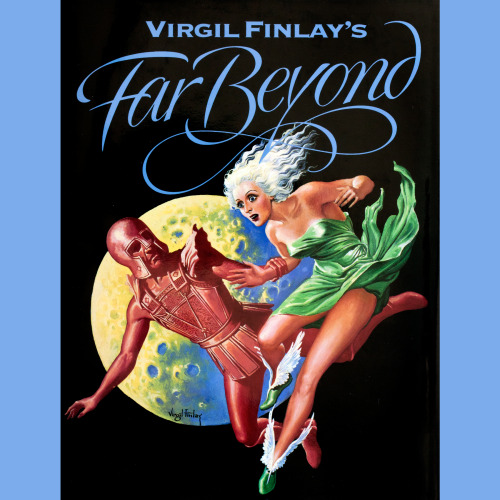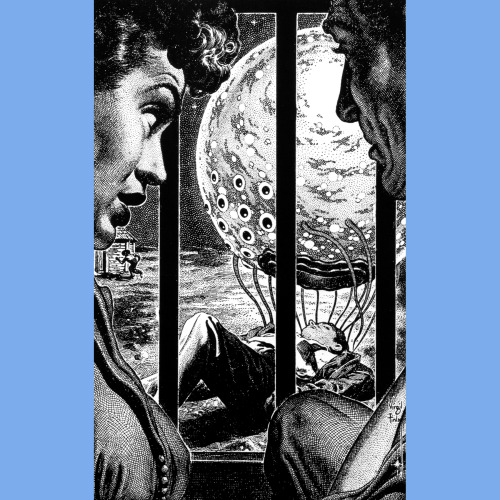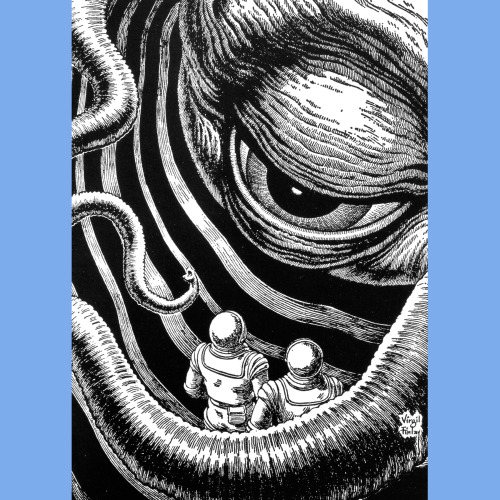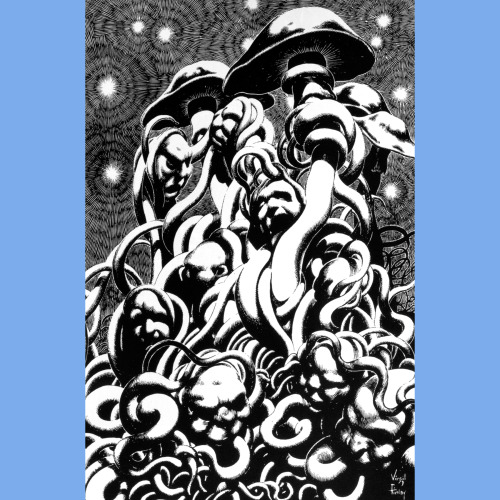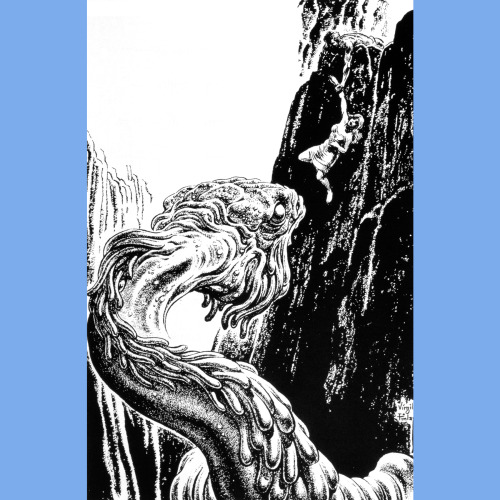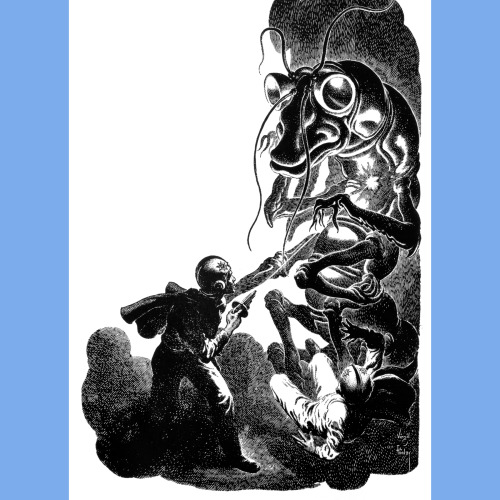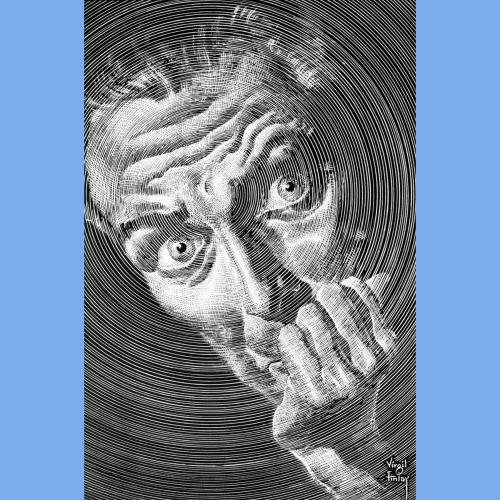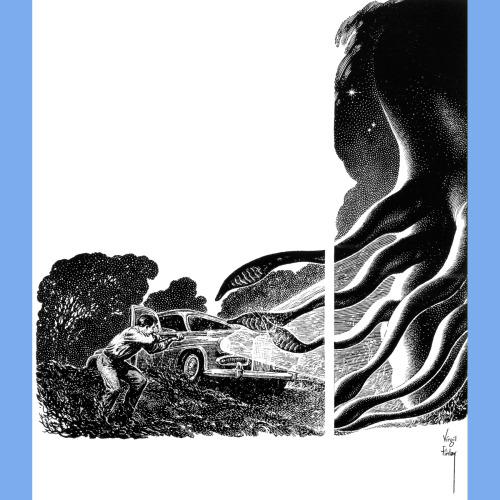Let’s backtrack from Wrightson to an early titan of fantasy art, Virgil Finlay. It is my gener
Let’s backtrack from Wrightson to an early titan of fantasy art, Virgil Finlay. It is my general opinion that Finlay does not get enough love or credit. To my knowledge, Far Beyond (1994) and a second collection from Underwood/Miller (Strange Science, 1992) are the most recent collections of his work. That’s a travesty, man.Finlay is the king of the pulp era. His clean line work, occasional stippling and graphic sense is really the bedrock of fantasy art from the late 30s through the 50s. His approach to science fiction just reverberates through people’s brains, man — his rocket ships, his robots. It’s all very atomic age in its vibe, and glorious. His horrors are suitably awful, too, a dab hand at a grotesque face. He seems to delight in using graphic elements to create unsettling or hypnotic effect in the viewer — he’s one of the earliest and most effective artists to attempt to illustrate things like mind control and psychedelic visions. And no matter how strange he gets, his line work is relentlessly legible. There is no difficulty reading his work; the imagery is clear though the meaning is often obscure.More Finlay, please. The Underwood/Miller books are fine for black and white reproduction, and that is probably what Finlay is best known for, but the color reproduction is lackluster. Considering the long shadow of his influence (which is self-evident, looking at his work) a definitive collection of Virgil Finlay’s art is long overdue. -- source link
#tabletop rpg#roleplaying game#dungeons dragons#virgil finlay#far beyond
